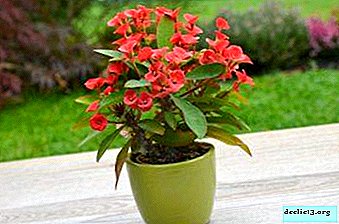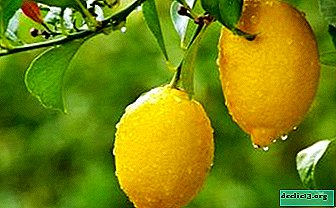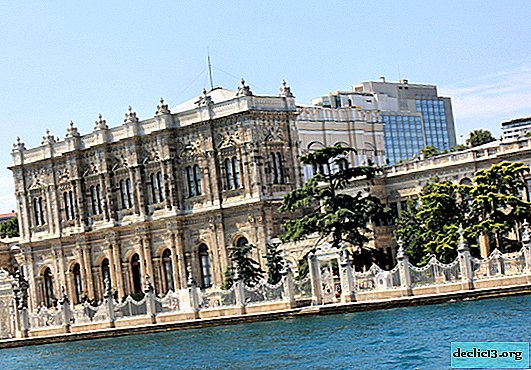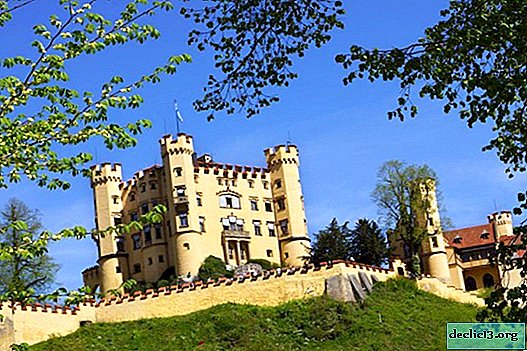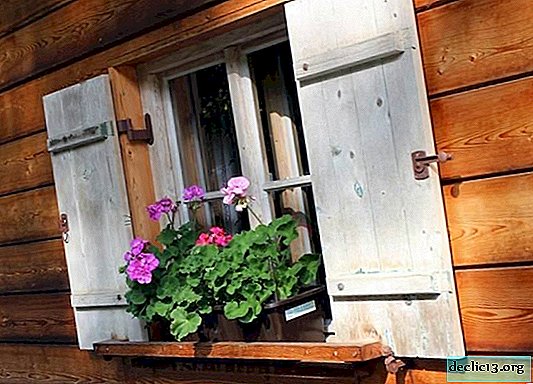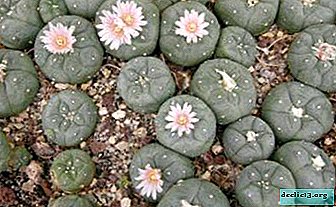Cactus study: how to transplant and transplant Gymnocalycium correctly and what to do with seeds and children?
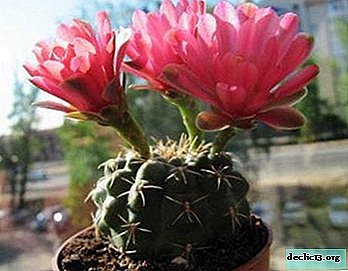
One of the few representatives of flowering cacti is the hymnocalycium. It has a large species diversity of about 80 species. Originally a plant from the plains and mountains of South America.
It is believed that cacti are unpretentious plants. Perhaps succulents do not require particularly strong care. But in order to grow a beautiful plant, you need to know some features of their cultivation, transplantation and reproduction. In this article, we will talk about the causes of cactus transplantation, the resettlement of children and seed propagation.
Why transplant a cactus?
Any living plant requires a transplant. The main reasons why you should think about a cactus transplant:
- Shop purchase. Usually in stores, succulents are sold in small, small pots. If you want the hymnocalycium to grow large and healthy, then you should definitely transplant it after the purchase.
- Plant growth. Like any plant, as it grows, it requires transplanting into a larger container. Signs of a small pot are: sticking out roots, a bursting pot. It is also recommended that young cacti be transplanted annually, and less than five years later.
Important! Transplanting into a new pot can stimulate plant growth.
- Forced. The transplant will have to be done if the pot breaks or the plant becomes ill.
Most often, succulents are transplanted in early spring, when they end a dormant period or before flowering. You should not transplant the hymnocalicium if buds or flowers have already appeared on it.
 Succulents do not need nutritious and organic rich soil. It is better to choose a slightly acidic soil with no lime. Also you can prepare the soil yourself:
Succulents do not need nutritious and organic rich soil. It is better to choose a slightly acidic soil with no lime. Also you can prepare the soil yourself:
- sheet (3 parts);
- turf (2 parts) land;
- peat (2 parts);
- coarse sand (3 parts);
- wood (1 part);
- brick (1 part) chips.
A large volume of the mixture is not required. As much as the root system takes. The pot of hymnalicium will suit both plastic and ceramic. Depends on your preference. Plastic is more practical, but ceramic looks aesthetically pleasing. When transplanting, the new pot should be slightly larger than the old one by 1-2 cm.
Sequencing
- Training. Protect hands. Thick rubberized gloves are perfect for this. Organize a work surface by spreading out old newspapers. Prepare a mixture of soil and a new pot.
Important! Do not water the cactus before replanting. So it will be easier to extract.
- Carefully remove the plant from the old pot. Tap the walls of the pot and push the root system through the drainage holes with a stick.
- Lightly peel the roots off the ground. At the same time, inspect the root system for diseases, and if necessary, treat it. It is also worth getting rid of dry and rotten roots.
- Planting in a new pot. It is imperative to lay a drainage layer at the bottom, for example, of gravel or crumb brick. Then fill the pot with a mixture of soil to the level of the proposed location of the root system.
Put the hymnocalicium in the pot so that the body of the plant is at the edge of the pot, and gradually, holding the succulent, add the mixture, periodically tapping the pot. Tamp lightly and, if necessary, lay the upper drainage layer of pebbles, sand or gravel.
Resettlement of children
The processes of the hymnocalycium need to be planted approximately in the same way as if it had to be transplanted. Therefore, the main recommendations are the same. It is better to resettle children in the spring, but it is not forbidden at other times of the year. The soil is the same as for an adult plant. The pot should be chosen small, corresponding to the size of the root system.
How to plant sprouts?
 Gently detach the baby from the main plant, turning to the side with light hand movements or tweezers. Leave to dry for 1-2 days.
Gently detach the baby from the main plant, turning to the side with light hand movements or tweezers. Leave to dry for 1-2 days.- Prepare hands, worktop, soil and pot.
- Fill the pot with a drainage layer, then with soil. Moisten the soil. Plant the process, filling with soil residues and the upper drainage layer.
Seed propagation
Gymnocalycium can also be grown from seeds. Seeds can be obtained in several ways: wait until the flowering of your plant is over and extract the seeds or buy in a store. Outwardly, it is practically impossible to determine the suitability of seeds for germination. Therefore, purchase seeds from reputable sellers.
Step-by-step instruction
- It is necessary to process and disinfect seeds in a weak solution of manganese.
- Prepare the ground. You can use the same as for an adult plant, while it should be fine-grained and loose. It is also better to warm it in the oven for 5-10 minutes. But it is better to use the ready-made mixture from the store, since the necessary elements of minerals and fertilizers will already be added to it.
- Place soil about 5 cm thick in the container and moisten evenly with warm water.
Important! The soil should always be moist from the moment of planting. The temperature is best maintained at about 20 degrees. Young hymnocalicia need good lighting.
- Make small holes, spread the seeds and lightly cover with earth.
- Cover with foil, wait for seedlings and first thorns. After that, it will be possible to remove the film. After about a year, succulents can be transplanted.
If the hymnocalycium does not take root. If the cactus does not take root after transplanting or transplanting, then a mistake may be made somewhere. It could be:
- Unsuitable soil or lack of drainage. It is better to change the soil. Be sure to add a drainage layer.
- Heavy watering. Water the plant as needed. In case of waterlogging, allow to dry or transplant into a new soil, without watering.
It is worth paying attention to such a type of succulents as the anthem calicum. Despite the subtleties of caring for him, he will delight with his beautiful flowers. The main thing is to take care of the plant.

 Gently detach the baby from the main plant, turning to the side with light hand movements or tweezers. Leave to dry for 1-2 days.
Gently detach the baby from the main plant, turning to the side with light hand movements or tweezers. Leave to dry for 1-2 days.

